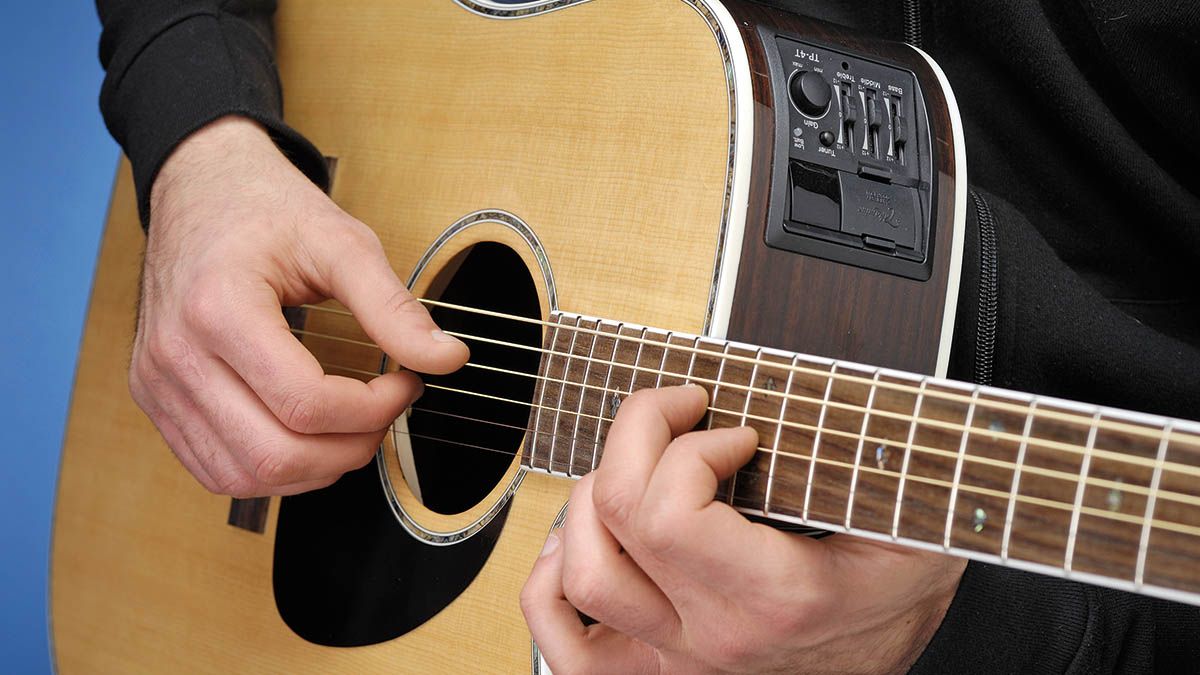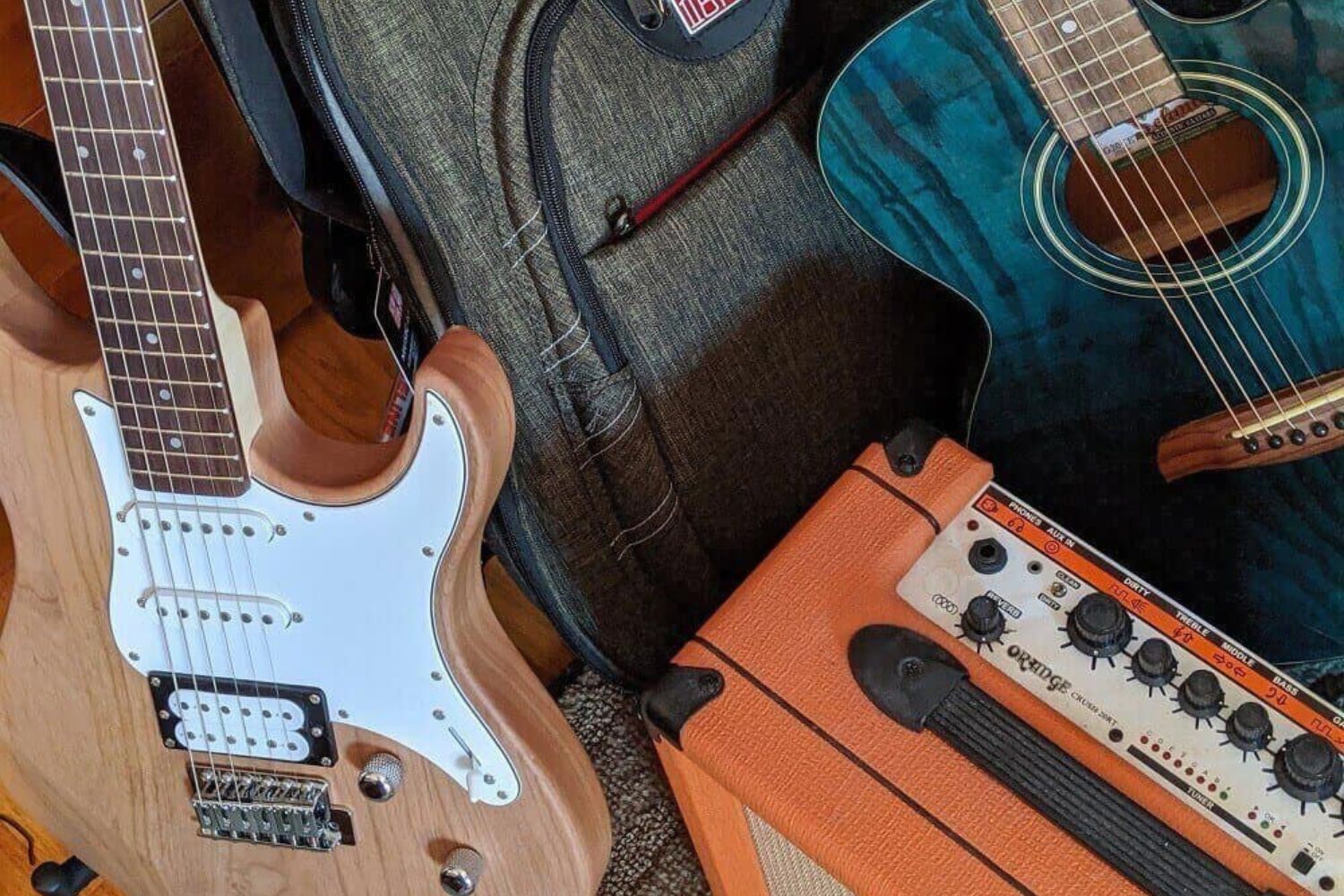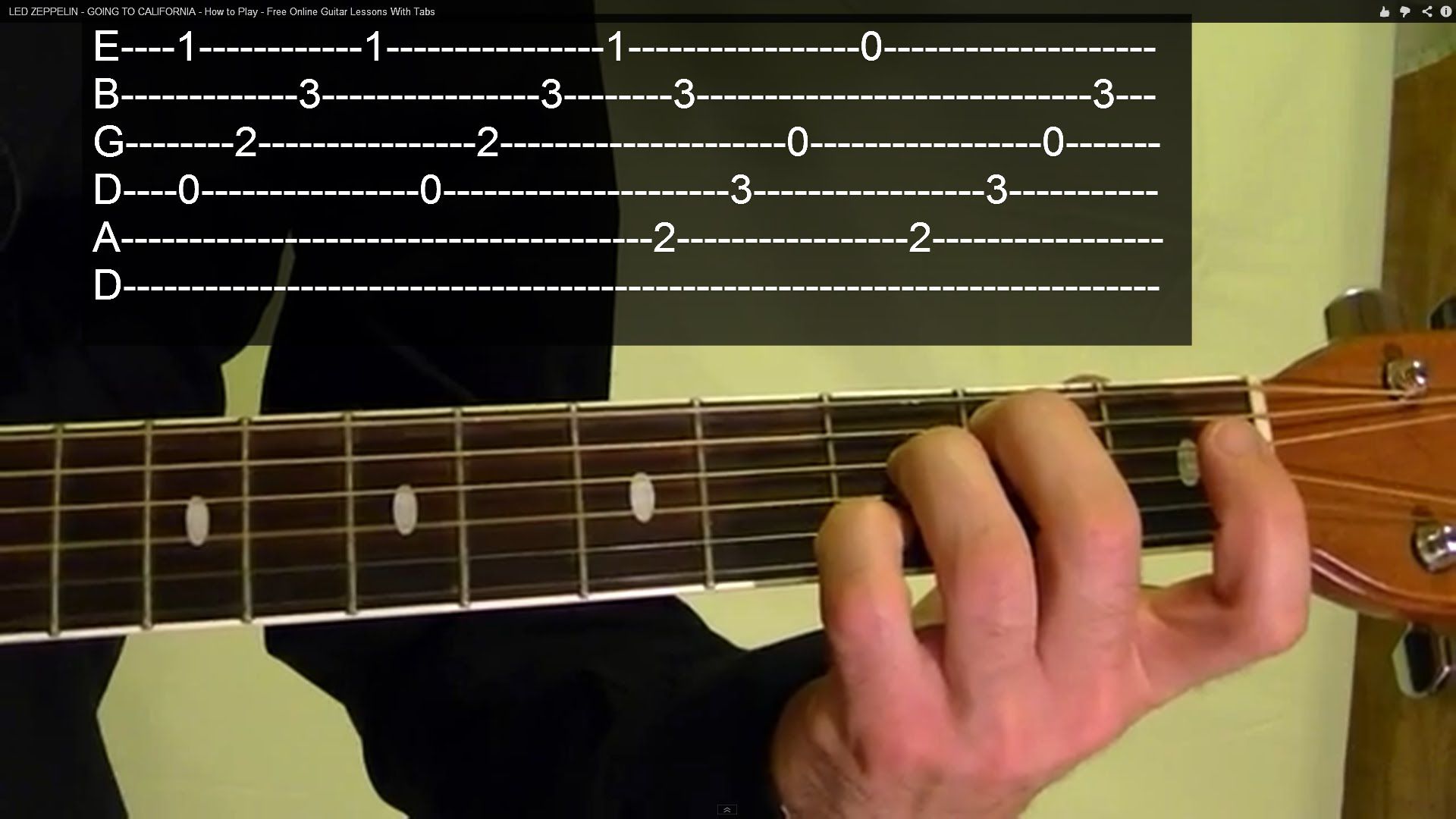Introduction:
Welcome to the world of guitar playing! Whether you’re a beginner or an experienced guitarist, you’ve likely come across the term “guitar muting.” But what exactly does it mean? Guitar muting is a technique used to control and dampen the sound produced by the strings of an acoustic guitar. It involves strategically placing your hands and fingers on the strings to produce a muted or percussive sound.
In this article, we will explore the various techniques and methods used to mute an acoustic guitar. We will discuss why muting is important and how it can enhance your playing style. Whether you want to add a rhythmic groove, create tight and precise strumming patterns, or simply experiment with different sounds, guitar muting is an essential skill to master.
Muting the strings of an acoustic guitar offers numerous benefits. It allows you to control the sustain and dampen unwanted noise, such as string buzz or sympathetic vibrations. It also adds depth and dynamics to your playing by incorporating percussive elements into your strumming or fingerpicking patterns. By mastering guitar muting, you can take your playing to the next level and unlock a wide range of sonic possibilities.
Throughout this article, we will delve into various muting techniques that will help you achieve the desired sound. We will explore palm muting, fingerstyle muting, partial chord muting, and string muting. Additionally, we will discuss the use of specialized tools like guitar mutes or dampeners to enhance your muting capabilities.
Whether you’re a beginner guitarist looking to improve your skills or an advanced player wanting to add more versatility to your playing, this article will provide useful insights and practical tips to help you master the art of muting an acoustic guitar. So, grab your guitar, get ready to explore new horizons of sound, and let’s dive into the world of guitar muting!
What is Guitar Muting?
Guitar muting, as the name suggests, involves muting or dampening the strings of an acoustic guitar to modify the sound produced. It is a technique that allows you to control the sustain and eliminate unwanted noise, creating a clean and precise sound. By muting specific strings or sections of strings, you can enhance the rhythmic elements of your playing, add percussive effects, and create a more dynamic sound overall.
There are several ways to mute the strings of an acoustic guitar, each yielding a different effect. Palm muting involves lightly resting the palm of your picking hand on or near the bridge of the guitar, reducing the resonance and sustain of the strings. This technique is commonly used in genres like rock and metal to achieve a tight and percussive sound.
Fingerstyle muting is another technique commonly used by acoustic guitarists. It involves using the fingers of your picking hand to touch the strings that are not being played, dampening their sound. By selectively muting certain strings while playing others, you can create intricate and complex fingerstyle patterns.
Partial chord muting is a technique used when playing chords. It involves muting certain strings within the chord to create a more staccato and percussive sound. This technique is often used in funk and percussive acoustic styles.
String muting is a technique where you use the fingers of your fretting hand to lightly touch the strings above the fretted note, preventing unwanted string noise. This technique is especially useful when playing complex chord voicings or fast single-note lines.
In addition to these manual muting techniques, there are specialized tools available called guitar mutes or dampeners. These accessories are typically placed on the guitar’s neck or strings to mute specific strings or create different tonal effects. They can be a useful addition to your muting arsenal, allowing you to experiment with unique sounds and techniques.
Overall, guitar muting is a fundamental skill for any guitarist, regardless of style or genre. It allows you to add dynamics, control sustain, and eliminate unwanted noise. Whether you’re playing rhythm or lead, mastering the art of muting will greatly enhance your playing and open up new possibilities for creativity and expression.
Why Mute an Acoustic Guitar?
Muting an acoustic guitar offers several benefits that can greatly enhance your playing and overall sound. Here are some key reasons why muting is an essential technique for all guitarists:
1. Control over sustain: Muting allows you to control the sustain of your acoustic guitar. By dampening the strings, you can create shorter, percussive notes or staccato effects. This is particularly useful in genres like funk or percussive acoustic styles where a crisp and punchy sound is desired.
2. Eliminating unwanted noise: Acoustic guitars can produce unwanted string buzz, sympathetic vibrations, or background noise. Muting helps to eliminate these unwanted noises, resulting in a cleaner and more focused sound. It allows you to have more control over the specific notes or strings that you want to emphasize.
3. Adding dynamics: Muting can add dynamic range and depth to your playing. By incorporating palm muting or selective string muting, you can create variations in volume, timbre, and attack. This adds a sense of musicality and expression to your playing, making it more interesting and engaging for the listener.
4. Rhythmic elements: Muting is often used to add rhythmic grooves to your playing. By combining muted and open strings, you can create intricate rhythmic patterns and syncopations. This adds a layer of complexity and rhythm to your playing, making it more captivating and enjoyable.
5. Versatility: Mastering muting techniques opens up a world of sonic possibilities. It allows you to experiment with different textures, tones, and techniques. From tight and percussive strumming patterns to delicate and muted fingerstyle arrangements, muting gives you the ability to explore a wide range of sounds and styles.
Whether you’re playing solo, in a band, or recording, muting is a valuable skill that can take your acoustic guitar playing to the next level. It helps you to shape and control the sound of your instrument, adding dynamics, rhythm, and expression. By incorporating muting techniques into your playing, you’ll develop a unique and distinctive style that will captivate listeners and make your playing stand out.
Techniques for Muting an Acoustic Guitar
There are several techniques you can use to mute an acoustic guitar, each offering a unique sound and playing style. Let’s explore some of the most commonly used muting techniques:
1. Palm Muting: Palm muting involves lightly resting the palm of your picking hand on or near the bridge of the guitar. This technique reduces the resonance and sustain of the strings, resulting in a tight and percussive sound. To palm mute effectively, place the fleshy part of your palm lightly against the strings, slightly muting and dampening the sound.
2. Fingerstyle Muting: Fingerstyle muting is primarily used in fingerpicking styles. It involves using the fingers of your picking hand to touch the strings that are not being played. By lightly resting your fingers on the adjacent strings, you can dampen their sound and create a clean and precise playing style. This technique allows you to control which strings ring out and which are muted, giving you great control over the overall sound.
3. Partial Chord Muting: Partial chord muting is employed when playing chords. It involves muting certain strings within the chord to create a more staccato and percussive sound. For example, when playing a barre chord, you can lightly touch the higher strings with the fingers of your fretting hand to mute them, allowing you to strum the chord with a more rhythmic and controlled approach.
4. String Muting: String muting is a technique used primarily for single-note lines and fast playing. It involves lightly touching the strings with the fingers of your fretting hand above the fretted notes, dampening any unwanted string noise. By applying a light touch, you can prevent open strings from ringing out and creating unintended sounds, resulting in a cleaner and more focused playing style.
5. Using a Mute or Dampener: Specialized tools like guitar mutes or dampeners can be used to achieve specific muting effects. These accessories are typically placed on the guitar’s neck or strings, muting specific strings or creating different tonal effects. They can be particularly useful for achieving percussive sounds or unique tonal textures in your playing.
By mastering these muting techniques and exploring their applications in various musical contexts, you can greatly enhance your acoustic guitar playing. Experiment with different combinations of muting techniques, and find the ones that best suit your playing style and musical preferences. With practice, you’ll develop greater control over your sound, adding depth, dynamics, and precision to your playing.
Palm Muting
Palm muting is a popular technique used by guitarists across various genres to achieve a tight and percussive sound. By lightly resting the palm of your picking hand on or near the bridge of the guitar, you can reduce the resonance and sustain of the strings, resulting in a muted and punchy tone.
To palm mute effectively, start by positioning your guitar pick between your thumb and index finger. Place the fleshy part of your palm lightly against the strings, just in front of the bridge. The goal is to achieve a balance between applying enough pressure to mute the strings, but not too much pressure that it completely kills the sound.
Finding the sweet spot for optimal palm muting will depend on the size of your hand, the position of your picking hand, and personal preference. Experiment with adjusting the angle of your hand and the pressure applied to the strings until you achieve the desired muted sound.
Palm muting is commonly used in genres like rock, punk, and metal, where a tight and defined rhythm is essential. It creates a chugging effect and adds a percussive quality to your playing. This technique is particularly effective when used in conjunction with power chords, creating a driving and aggressive sound.
Furthermore, palm muting can be used dynamically, allowing you to vary the intensity and clarity of the muted sound. By using lighter palm muting, you can achieve a softer and more subtle effect, while applying more pressure can create a heavier and more aggressive tone.
When palm muting, it’s important to maintain consistency in your picking hand motion and muting pressure. This will ensure that the muted notes have a uniform sound and rhythm. Practice playing various strumming patterns or palm-muted power chord progressions to build your control and precision.
Remember, palm muting is a technique that requires practice to master. Start by practicing slow and controlled strumming, gradually increasing your speed as you become more comfortable. Pay attention to the sound produced and adjust your technique accordingly.
Incorporating palm muting into your playing will add a new dimension to your guitar skills. It allows you to create a distinct and percussive sound that can drive a song forward and inject rhythmic energy. Experiment with different rhythms and dynamics to find your unique palm muting style and use it to enhance your overall playing technique.
Fingerstyle Muting
Fingerstyle muting is a technique commonly used by acoustic guitarists to create a clean and precise sound in fingerpicking styles. This technique involves using the fingers of your picking hand to touch the strings that are not being played, dampening their sound and preventing unwanted string noise.
To execute fingerstyle muting, begin by positioning your picking hand above the strings, with your fingers arched and ready to pluck. As you pluck a specific string with a finger, let the adjacent fingers rest gently on the strings, lightly muting them. The fingers should touch the strings enough to prevent them from vibrating but not press down too hard as to completely silence the strings.
The goal of fingerstyle muting is to selectively mute unwanted strings while allowing the desired strings to ring out clearly. It requires control and precision in both your picking hand and fingers. By muting the unused strings, you can achieve a cleaner sound, with each note sounding distinct and clear.
This technique is particularly useful when playing complex fingerstyle patterns or intricate melodies on the guitar. It allows you to maintain clarity between the different notes and strings, preventing any unintended string noise or sympathetic vibrations.
Experiment with different finger placements to achieve the desired muting effect. Use the tip of your fingers or the fleshy part, depending on the specific string or note you wish to mute. Be mindful of the level of pressure applied, as too much pressure can fully mute the strings, while too little pressure might result in unintended string noise.
Fingerstyle muting also provides a rhythmic dimension to your playing. By selectively lifting and muting strings, you can create syncopated rhythms, accents, or staccato effects. This adds interest and complexity to your fingerpicking patterns, making them more dynamic and engaging.
To practice fingerstyle muting, start with simple fingerpicking exercises or songs. Focus on maintaining a consistent and controlled picking hand motion while utilizing selective muting with your other fingers. Gradually increase the difficulty of the patterns as your coordination and control improve.
Remember, fingerstyle muting is a technique that requires practice and patience to master. It may feel challenging at first, but with consistent practice, you will develop the ability to selectively mute strings without disrupting your overall playing. Incorporate fingerstyle muting into your repertoire to enhance your fingerpicking style and achieve a cleaner and more articulate sound on your acoustic guitar.
Partial Chord Muting
Partial chord muting is a technique used to create staccato and percussive effects when playing chords on an acoustic guitar. It involves muting certain strings within a chord to achieve a more controlled and rhythmic sound.
When playing a chord, you can use your fretting hand to selectively mute specific strings within the chord shape. By lightly touching the unwanted strings with the fingers of your fretting hand, you prevent them from ringing out fully while allowing the intended notes to sound clearly.
To perform partial chord muting effectively, it’s important to identify which strings you want to mute and position your fingers accordingly. For example, if you’re playing a standard open D chord (xxo232), you might want to mute the open low E string by lightly touching it with the pad of your index finger or the palm of your hand. This can be done by slightly angling your index finger to rest against the string without fully pressing it down.
By selectively muting certain strings within a chord, you can create a staccato or choppy effect, enhancing the rhythm and percussive nature of your playing. This technique is commonly used in genres like funk, acoustic percussive styles, and rhythmic strumming patterns.
To practice partial chord muting, start by playing basic open chords and gradually incorporate the muting technique. Strum the chord slowly at first, focusing on muting the unwanted strings while allowing the desired notes to ring out. As you become more comfortable, gradually increase the tempo and experiment with different strumming patterns to develop your own rhythmic style.
It’s important to maintain a balance between muting the unwanted strings and ensuring that the desired notes sound clear. Practice and experimentation will help you find the right amount of pressure and finger placement to produce the desired sound.
Additionally, partial chord muting can be combined with other techniques like palm muting or selective fingerstyle muting to further enhance the rhythmic complexity of your playing. By combining different muting techniques, you can achieve unique and dynamic chord progressions and add a distinct rhythmic flair to your acoustic guitar playing.
As with any technique, mastering partial chord muting requires practice and patience. Start with simple chord progressions and gradually incorporate more challenging chord shapes and rhythmic patterns. Over time, you’ll develop greater control and precision in muting specific strings within chords, enabling you to create more expressive and rhythmically engaging performances on your acoustic guitar.
String Muting
String muting is a technique used to prevent unwanted string noise and maintain a clean and precise sound while playing an acoustic guitar. By lightly touching the strings with the fingers of your fretting hand above the fretted notes, you can dampen any unintentional string vibrations and eliminate unwanted string noise.
To execute string muting effectively, start by fretting a note or a chord on the guitar neck as you normally would. Then, let your fretting hand rest gently against the strings above the fretted note or chord, ensuring that the fingers are lightly touching the strings without fully pressing them down. This technique requires a delicate touch to mute the strings while still allowing the intended notes to ring out clearly.
String muting is particularly useful when playing complex chord voicings or fast single-note lines, where the strings adjacent to the fretted notes may vibrate and create noise. By muting these adjacent strings, you can achieve a cleaner and more focused sound.
In addition to preventing unwanted string noise, string muting also helps to control the sustain and resonance of the guitar. It allows you to articulate each note more precisely, giving your playing a crisper and more controlled sound.
When practicing string muting, start by playing simple single-note lines or basic open chords. Pay attention to the string muting hand and ensure that only the intended notes ring out while other strings are muted. Gradually increase the complexity of the patterns and chords as your coordination and control improve.
Experiment with different levels of pressure and finger placement to achieve the desired muting effect. Remember, string muting requires maintaining a delicate balance between muting the strings and allowing the intended notes to ring out. Practice transitioning smoothly between muted and open notes to improve your technique and achieve a seamless and controlled sound.
String muting can be combined with other muting techniques, such as palm muting or fingerstyle muting, to further enhance your control over the sound. This combination allows you to create unique textures and dynamics in your playing, adding depth and variety to your acoustic guitar performances.
By mastering the art of string muting, you will gain greater precision and control over your acoustic guitar playing. It will enable you to produce cleaner and more articulate notes, eliminate unintended string noise, and enhance the overall clarity and definition of your sound. With practice, string muting will become an essential tool in your repertoire, allowing you to express yourself with greater nuance and control on the acoustic guitar.
Using a Mute or Dampener
Using a mute or dampener is another effective technique for muting an acoustic guitar. These accessories are specifically designed to mute or dampen specific strings, creating unique tonal effects and enhancing the overall sound of the guitar.
A guitar mute or dampener is usually made of rubber, foam, or fabric and is placed on the strings, either between the bridge and soundhole or higher up on the neck. By muting specific strings, these devices help to reduce unwanted string vibrations and sympathetic resonances, resulting in a more focused and controlled sound.
There are different types of mutes and dampeners available, each with its own characteristics and effects. Some mutes are adjustable, allowing you to control the level of muting applied to the strings. Others are more fixed in their muting capabilities.
Using a mute or dampener can be particularly useful when playing percussive or funky styles, where a muted or staccato sound is desired. It adds a unique texture to your playing and allows you to achieve specific tonal effects that may be difficult to replicate with just your hands and fingers.
To use a mute or dampener effectively, follow the manufacturer’s instructions for placement and positioning. Experiment with different positions to achieve different muting effects. You can also combine the use of a mute or dampener with other muting techniques, such as palm muting or fingerstyle muting, to further enhance the desired sound.
It’s important to note that while a mute or dampener can be a valuable tool for enhancing your muting capabilities, it should not be solely relied upon. Developing proficiency in manual muting techniques is important for versatility and control over your sound. Mutes and dampeners can be seen as additional accessories to complement your existing muting skills.
When practicing with a mute or dampener, start by playing simple chord progressions or single-note lines to get a feel for the muted sound. As you become more comfortable, incorporate different strumming patterns or fingerpicking techniques to explore the range of possibilities that the mute or dampener offers.
Remember that using a mute or dampener is a matter of personal preference and the specific sound you want to achieve. It’s important to experiment and find the right balance to achieve the desired tonal effect for your playing style and musical genre.
Incorporating a mute or dampener into your acoustic guitar playing provides an additional tool to shape your sound and explore new sonic possibilities. It allows you to add unique textures and effects, enhancing your creativity and musical expression. Whether you’re looking to add percussive elements or create a more controlled sound, a mute or dampener can be a valuable addition to your acoustic guitar toolkit.
Tips for Effective Guitar Muting
Muting is a technique that requires precision and control to achieve the desired sound on an acoustic guitar. Here are some tips to help improve your muting skills and make your guitar playing cleaner and more articulate:
1. Start Slowly: When practicing muting, start with slower tempos and simple patterns. This allows you to focus on muting specific strings and maintaining the clarity of the notes you want to hear. As you gain confidence and accuracy, gradually increase the speed and complexity of your playing.
2. Focus on Hand Positioning: Pay close attention to the positioning of your hands while muting. For techniques like palm muting and fingerstyle muting, ensure that your hand is in the optimal position to achieve the desired sound. Experiment with different hand angles and pressures to find what works best for you.
3. Control String Pressure: When muting, it’s essential to find the right balance between pressing down enough to prevent unwanted string noise and muting, but not pressing too hard that it deadens the sound completely. Practice applying just enough pressure to dampen the strings without sacrificing the desired tone.
4. Practice Muting Specific Strings: Isolate specific strings and practice muting them while playing various patterns. This will help develop your muting accuracy and improve your overall dexterity. Starting with single-string muting exercises before moving on to multiple strings can be beneficial in building your skills.
5. Use Muting as a Dynamic Technique: Explore using muting as a dynamic tool to add variety and nuance to your playing. Experiment with different levels of string muting to achieve dynamic contrast between muted and open notes. This can make your playing more expressive and interesting.
6. Develop Rhythmic Control: Muting techniques are closely tied to rhythm. Focus on maintaining a steady and consistent rhythm while muting specific strings. Practice with a metronome or backing tracks to improve your sense of timing and rhythm when muting.
7. Listen and Evaluate: Pay attention to the sound you are producing while muting. Listen for unwanted string noise, buzzing, or any inconsistencies in your technique. Take the time to evaluate your playing and make adjustments as necessary to achieve a clean and controlled sound.
8. Experiment and Be Creative: Muting techniques can vary depending on the style and genre of music you’re playing. Don’t be afraid to experiment and incorporate your own variations in muting to suit your personal style and musical preferences. Use muting as a tool for creativity and self-expression.
Mastering the art of guitar muting takes time and practice. It’s a skill that will enhance your playing and allow you to achieve a cleaner and more controlled sound on your acoustic guitar. With dedication and attention to detail, you’ll be able to integrate muting seamlessly into your playing and unlock a new level of musical expression.
Conclusion
Mastering the techniques of guitar muting is a valuable skill that can greatly enhance your acoustic guitar playing. Whether you’re a beginner or an experienced guitarist, incorporating muting techniques into your playing repertoire allows you to achieve a cleaner, more controlled sound and opens up new creative possibilities.
Throughout this article, we have explored various muting techniques, including palm muting, fingerstyle muting, partial chord muting, string muting, and the use of mutes or dampeners. Each technique offers its own unique sound and playing style, allowing you to tailor your playing to different genres and musical contexts.
Effective guitar muting provides numerous benefits. It grants you control over the sustain, eliminates unwanted noise, adds dynamics, and enhances the rhythmic elements of your playing. By selectively muting strings or sections of strings, you can create intricate patterns, percussive effects, and articulate each note with precision.
As you embark on your journey to master guitar muting, keep in mind the importance of practice and experimentation. Start with simple exercises and gradually incorporate more complex techniques into your playing. Focus on hand positioning, string pressure, and rhythmic control to achieve the desired sound. Additionally, don’t hesitate to explore and combine various muting techniques to create a unique and personal playing style.
Remember, developing proficiency in manual muting techniques is crucial, as they provide the foundation for your muting skills. Specialized accessories like mutes or dampeners can add additional tonal textures, but should not replace the fundamental skills of hand muting.
So, grab your acoustic guitar, experiment with different muting techniques, and let your creativity flow. The world of guitar muting awaits, ready to elevate your playing to new heights. With practice, patience, and an open mind, you’ll be able to achieve a cleaner, more controlled sound and unlock a whole new range of sonic possibilities on your acoustic guitar. Happy muting!

























